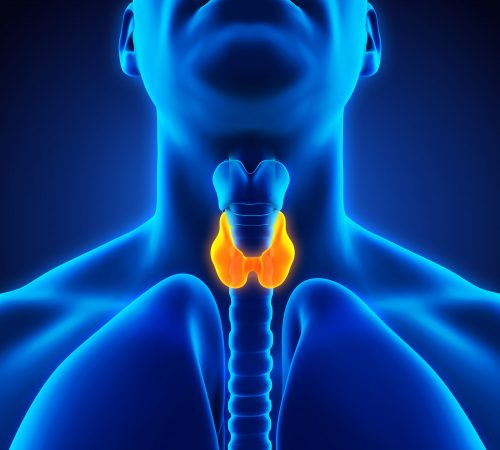Female Hormone Replacement Therapy (HRT) at The Men’s Health Clinic

Over the past few years, we have been inundated with requests for a female version of our clinic, applying a similar methodology to female hormone replacement therapy that we successfully use with male hormone replacement therapy. It stands to reason that the same principles would apply – men may well be from Mars and women from Venus but, from a physiological perspective, we share many similarities.
Our prescribing rationale for men with Testosterone Deficiency is clearly described in an article I wrote with Joseph Hearnshaw, our Medical Researcher – Microdosing TRT – The Future of Testosterone Replacement Therapy. This clinical practice has naturally evolved over the years, to the point that we are now very confident in this TRT model and, as a result, have men travel to our clinic from over 30 countries outside of the UK just to be under our expert care and supervision..
As an active member of the British Society for Sexual Medicine and connected member of British Menopause Society, I believe that there are shortcomings in the current female HRT model in the UK. A more progressive and scientific approach needs to be adopted, in order to improve patient outcomes, and we aim to to pioneer this change.
In my professional opinion, injections are the only effective method of achieving stable hormone levels. They allow for careful titration of dose according to effect, something that patches, creams, orals, and wishful thinking cannot. HRT should not be a one-size-fits-all cookie cutter approach. It should be considered, using body identical hormones, and personalised to meet the individual needs of the patient.
Microdosing Female HRT
As with male HRT, the premise behind microdosing female HRT is using the minimum effective dose in the most effective manner, to achieve stable hormone levels for optimal health. If you positively impact physiology, you will see an improvement in psychology, or at least give it a fighting chance! This can be perfectly illustrated within the female reproductive cycle; hormonal levels and fluctuations illicit a change in libido, the timing for which is deliberate as females are supposed to have a high sex-drive at the time of ovulation, to increase their chances of conception. Pre-menstrual tension (PMT) occurs because of the imbalance between progesterone and oestradiol, altering mood and often sex-drive. The relationship between oestradiol, testosterone and progesterone is important, not only for sex-drive, but also normal physiology. Whilst menopause signals the end of the reproductive cycle in a female’s timeline, and a decline in overall health due to hormonal deficiencies, healthy hormone levels are necessary for normal physiology.
One of the goals of microdosing female HRT is reversal of the negative symptoms that occur during the perimenopause and because of the menopause. Hormonal fluctuations cause a change in physiology as much as the actual hormone deficiency that occurs because of the menopause. Negative symptoms arise because of lower oestrogen, testosterone and progesterone levels. It is important to monitor other blood parameters and maintain a good level of overall health, including cardiovascular health, to feel the benefits of microdosing HRT.
Common Perimenopause & Post-Menopausal Symptoms
The most common reported symptoms during the peri-menopause and menopause are as follows:
- Psychological – low mood, poor memory, low energy
- Sleep disturbance
- Vasomotor – hot flushes and night sweats.
- Sexual symptoms – dyspareunia (pain during intercourse), vaginal dryness, urinary incontinence.
- Genitourinary symptoms – Vaginal dryness, burning sensation, itching, prolapse, Lower Urinary Tract Symptoms (LUTS)
You can extrapolate from this that healthy levels of oestrogen, testosterone and progesterone are necessary for optimal neuroendocrine, cardiovascular, and genito-urinary health. Each hormone has a varying role in maintaining function, and the importance of this ratio cannot be over-emphasised.
Our aim is to carefully titrate your levels of oestradiol, testosterone and progesterone according to affect, and to within normal physiological parameters, for both physical and psychological well-being. This will involve the use of oestradiol valerate and testosterone cypionate injections, alongside progesterone as indicated.
Hormones & Stability
Hormones are chemical messengers that help to facilitate normal physiological function. Each hormone has a specific role, it can be excitatory or inhibitory. They can exert autocrine, paracrine and endocrine effects, and are all dependent – whether that be a direct or indirect relationship – they are not independent. Whilst the quantitative blood levels are important, it is the effect of the hormone on the target organ that directly influences the function of the cell. In fact, it is the interrelationship between various hormones that determines function. Whilst the brain acts as the control centre, the hormones released by the target organs exert a feedback mechanism to the brain, influencing function. It is a self-regulating mechanism that relies on normal physiology to work. Hormones can up-regulate and down-regulate the production of other hormones. The steroidogenesis pathway and female reproductive cycle illustrates this perfectly.
The body is incredibly complicated to make our lives incredibly simple. Our understanding of the importance and roles of the various hormones within our bodies is evolving, medicine is as much an art as it is a science. The limiting factor is the validity of the current research and its application within the human body. If you add an exogenous hormone to the body, the effect of that hormone will have a cascade effect on other physiological parameters. Optimal physiological function requires stability. Homeostasis is a complex process that is constantly working to maintain a stable internal environment despite external change. The hormonal changes that occur during the female reproductive cycle disrupts this, which results in a change in both physiology and psychology. Put very simply, this process is necessary for egg production and release, preparation of the uterus for embryo implantation, and then subsequent regeneration if conception is not achieved.
As much as the body has mechanisms to maintain stability, it relies on contrasting processes to function; anabolic vs catabolic, sympathetic vs parasympathetic. To establish balance within the body there needs to be contrast. In fact, human consciousness relies on the subjective appreciation of these subtle changes. I am a firm believer that physiology is more important than psychology, we allow psychology to affect physiology, whereas we should be influencing physiology to affect psychology. Relative hormonal stability is fundamental to this, but we need to appreciate the difference between foundation hormones and reward hormones. Both testosterone and oestradiol are anabolic, they are both necessary for growth and repair. Whilst men have greater anabolic capacity due to testosterone’s effect on androgen receptors, oestrogen confers a more cardioprotective effect, one of the many reasons women outlive men.
The Sex Hormones – Oestradiol, Testosterone & Progesterone
The female sex-hormones include oestradiol, testosterone, and progesterone. All of these hormones have important functions outside of helping to facilitate the female reproductive cycle. Oestradiol is necessary for cognitive function, mood and libido. It is necessary for cardiovascular health and has various roles, one being helping maintain the endothelial lining of the blood vessels. Oestradiol is necessary for bone strength and joint health. Testosterone, traditionally thought of as the male sex-hormone, also serves numerous important roles in females. It is slowly being accepted by traditional healthcare and is being used as a way to improve libido in females on HRT. However what is often overlooked is it’s role in other physiological functions, including erythropoiesis and maintaining bone mineral density. Progesterone is traditionally prescribed in HRT to preserve the integrity of the uterus and lower the risk of endometrial cancer, but it is also needed for neurological function and bone strength. Women often complain of sleep dysregulation during the luteal phase of their menstrual cycle, this is usually because of a rise and fall in progesterone level.
Taking Personal Responsibility
We need to adopt a holistic personalised approach to patient care. You will not feel the benefits of microdosing HRT with an untreated pathology such as thyroid or other metabolic dysregulation, which can dampen any expected qualitative improvements from stable female hormone levels. I can optimise your female hormone levels, but you need to make the necessary adjustments to your lifestyle, nutrition and exercise to truly feel the benefits. I will support you, but you need to take personal responsibility for your own health, and only then will you reap the benefits of hormone optimisation. This is all about achieving and maintaining normal physiology, improving quality and quantity of life. Living longer and living better.
For more information, please contact us, with the subject header ‘Female HRT’.
Dr Robert Stevens MBChB MRCGP Dip.FIPT


